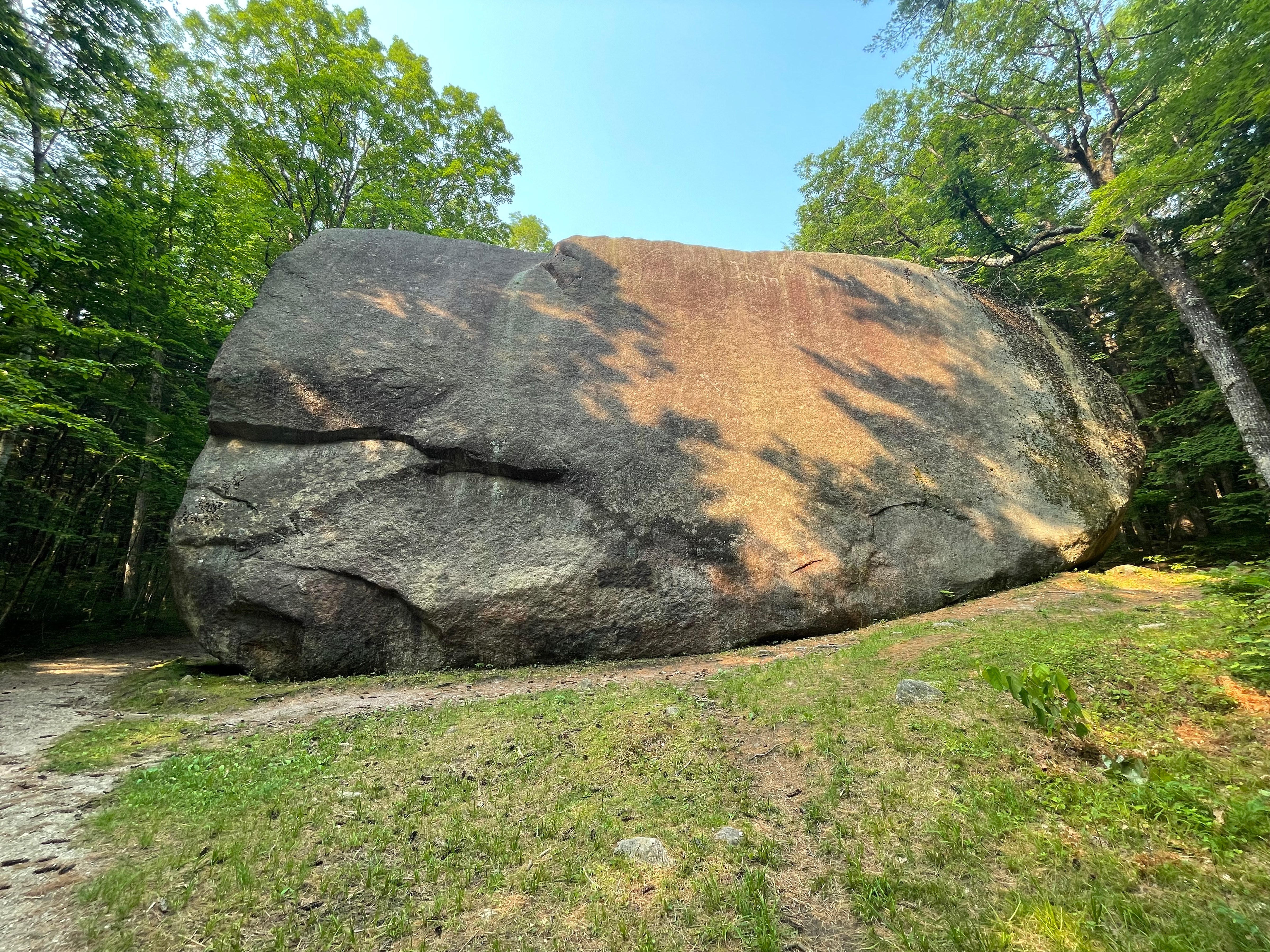
The process of creating Autumnal Beauty
This summer, my now fiancé and I travelled to Conway, NH for a week to enjoy the beautiful White Mountains, walk around the small town, while staying along Paqueket Pond. This isn’t our first time here, as we travelled here last year as well and enjoyed our stay so much we knew we had to do it again. Most people travel to the white mountains to hike the presidential range, we travelled here for an infamous boulder, the largest glacial erratic in North America, the Madison Boulder. A glacial erratic is a rock or boulder that traveled with the glaciers that used to extend deep into New Hampshire during the last glaciation. These erratics have a different composition than surrounding rocks, and appear to have shown up out of nowhere.
 This boulder is famous for its enormous size (83’ long, 37’ wide, 23’ high), weighing an unfathomable 10+ million pounds, and it's nestled within the residential woods of Madison, NH. Pictures don’t do it justice, as you walk along the small path into the forest you start to see a towering gray wall in the distance, and as you approach it it begins to engulf the area with a powerful energy. Walking up to this behemoth and placing your hand on the cold boulder is a surreal experience, knowing it comes from the mountains up north, traveled along mile thick glaciers, and now it's on the forest floor in one complete piece. Anyone who travels to the North Conway area needs to check out this boulder at least once to experience this incredible geologic anomaly. When I got home from the trip, my mind was solely fixated on this boulder, I knew I had to illustrate it.
This boulder is famous for its enormous size (83’ long, 37’ wide, 23’ high), weighing an unfathomable 10+ million pounds, and it's nestled within the residential woods of Madison, NH. Pictures don’t do it justice, as you walk along the small path into the forest you start to see a towering gray wall in the distance, and as you approach it it begins to engulf the area with a powerful energy. Walking up to this behemoth and placing your hand on the cold boulder is a surreal experience, knowing it comes from the mountains up north, traveled along mile thick glaciers, and now it's on the forest floor in one complete piece. Anyone who travels to the North Conway area needs to check out this boulder at least once to experience this incredible geologic anomaly. When I got home from the trip, my mind was solely fixated on this boulder, I knew I had to illustrate it.
Sketch/Line art
At first, this piece was going to depict a quiet forest with the enormous boulder taking up the majority of the canvas. I wanted it to be accurate to the boulder and the landscape around. However, this became a little boring for me since the reference photos I took of the boulder had little vegetation on the ground, scattered tree canopies, and worst of all, the graffiti scribbled along the top. So, I took some creative liberties to bring this scene to life. Instead of the pine needle laden ground with scattered rocks, and dilapidated roots, I replaced it with diverse plants, flowers, and vegetation. Of course that doesn’t mean the original landscape wasn’t beautiful and important, but for this illustration I felt it made it a bit grim and luckluster. To further this, I added some white tailed deer in the forefront and a buck closer to the boulder. This added a sense of scale to this illustration to really bring home just how enormous this boulder is. After finishing the sketch, I began to tackle the lineart where I refined and added minor details, and separated each section to make coloring and rendering easier.
Flat Colors/Rendering
As said previously, the original landscape was quite dark, brown, and grim so I used the addition of flowering plants to add vibrant colors that bring the eye around the composition, and add areas of interest besides the giant boulder. The other ground foliage also helped break up the monotony of a dull forest floor, and to separate the foreground’s closeup lush foliage, with the foliage in the background, as without that it felt as though they blended together unnaturally. At first, I was intending to render this piece how I normally would, with the lightsource coming from the bright blue sky above, and the closer to the ground you get the darker the shading. However, when I went through and rendered everything, I felt as though it was a bit static and samey across the foreground to background. This was when I began to experiment with “multiply” layers where I added deep shadows around the boulder (with a silhouette of the canopy), forest floor, and in front of the deers as the light shines behind them. This changed the whole illustration for the better and it made it feel like this boulder was truly sitting in a deep dark forest, with only a hole in the canopy allowing light in. This is the first piece where I layered “multiply” layers to achieve this look, and let's just say, if/when I illustrate a deep forest I will employ this technique again. I’m very satisfied with how this illustration came out, and I learned a new technique on top of it.